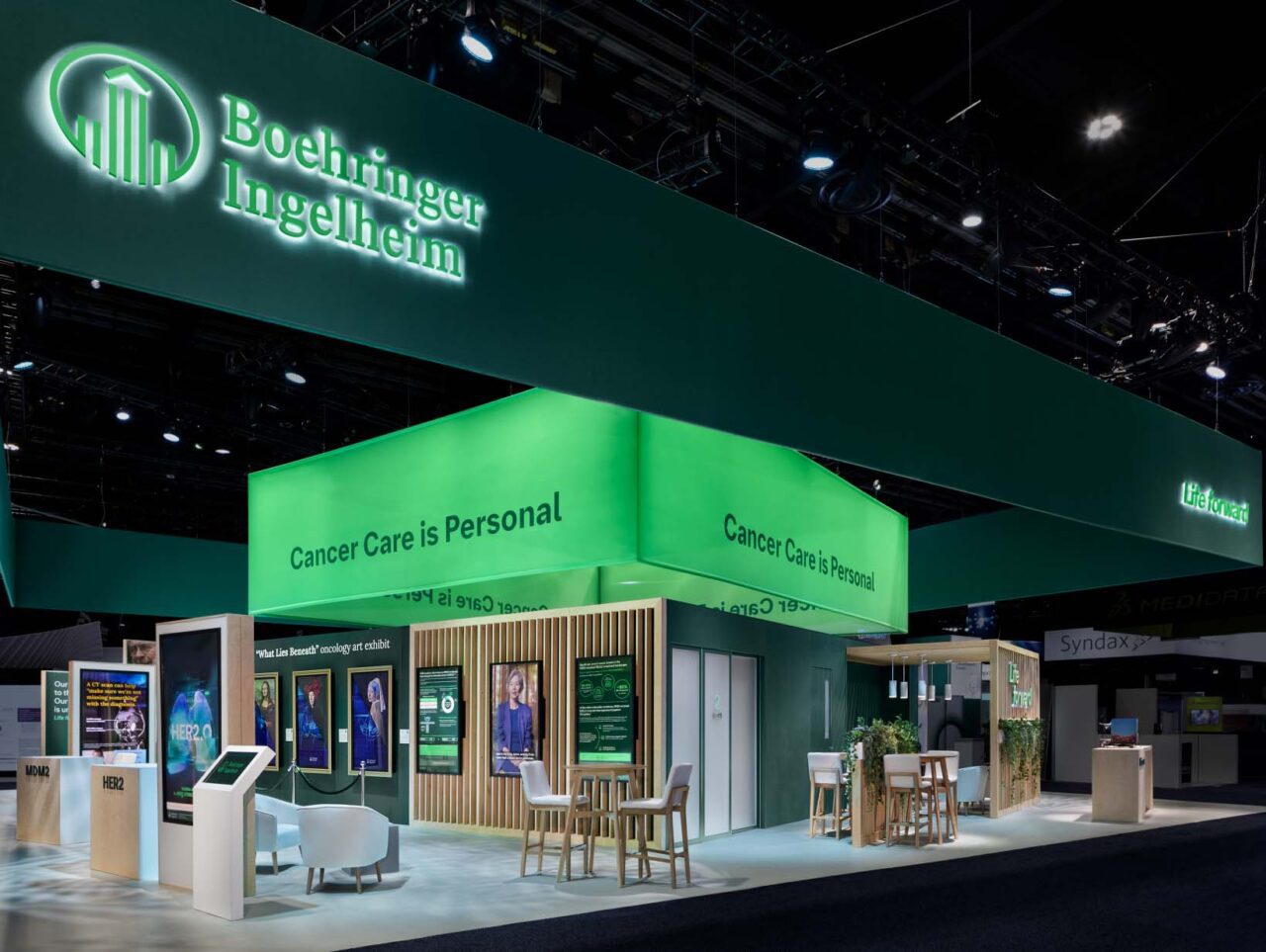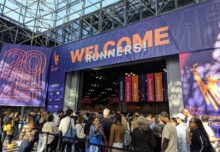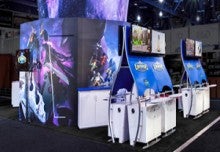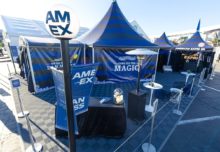Boehringer Ingelheim, the world’s largest independently owned pharmaceutical company headquartered in Ingelheim, Germany, has set out to bring real, tangible change to their exhibition practices. With a schedule of more than 400 events worldwide, Boehringer wanted to represent the company’s commitment to its Sustainable Development for Generations efforts, rooted in the United Nations Sustainable Development Goals and the Paris Climate Accord.
As part of Boehringer’s “Life forward” claim, the company partnered with experiential marketing agency Access TCA to design the next-level sustainable exhibit and debut it at the American College of Clinical Oncology (ASCO) 2024, a global oncologist gathering in Chicago.
“Sustainability is not just a buzzword,” says Susan Holz, Boehringer Ingelheim Corporate Affairs. “As a leading healthcare company, [the organization] embraces its responsibility to address the needs of today without compromising future generations’ ability to do the same. The company is becoming more sustainable every day, as exemplified by this booth design, and it is tackling this urgent challenge head-on for patients, people, and the planet.”
Access TCA worked on elevating traditional fabrication, starting with an investment in upgrading their production capabilities with more environmentally efficient processes, a new state-of-the-art printer and CNC machine, and sustainable materials.
“No one on either team thought that reimagining the status quo would be easy or that it could be accomplished quickly,” says Amy Sondrup, president of Access TCA. “First, we had to learn how to initiate new best practices prioritizing sustainability. Secondly, we needed to research, explore, and, when necessary, create the next generation of materials used in fabrication. We also acknowledged that we might not always choose the less expensive option, which led us to the third consideration: financial investment, which will come in endurance. The goal was to make this new level of sustainability the foundation of the brand’s entire global congress program.”
Wood and Veneer
The brand’s guidelines specify using FSC-certified wood harvested from responsibly managed forests, formaldehyde-free lamination, and natural oil finish. Access chose to go with maple wood because of its rich orange-yellow natural shine that complimented the brand’s dark green corporate color. But what about treating the wood? The solution was to apply cooking-grade vegetable oil, a labor-intensive process that brought out the natural beauty of the wood.
“We’ve been working with natural wood for 40 years, and it never occurred to us to use food-grade oil,” says Sondrup. “There are so many possibilities to be unlocked in raw materials.”
Flooring
The brand had eliminated carpet in its booths, and flooring became a key opportunity for change. The decision was made to use Marmoleum, a flooring material comprised of 98 percent natural raw materials such as linseed oil, wood flour, limestone, resin, and jute, which qualifies for LEED points. However, the repetitive handling during installation was hard on the Marmoleum, and during our planning process, it seemed like a perfect choice. Sondrup said there are already newer, more durable options for future shows.
Recycled Components
Aluminum extrusion systems arrived in the U.S. over twenty years ago and have been a reliable, reusable core for exhibits ever since. The brand already owned an inventory of modular aluminum frames, which were used in this exhibit as much as possible in tandem with other sustainable materials.
Signage and Fabrics
Traditional fabrics used for these purposes didn’t satisfy the sustainability requirements, so the choice was made for 62 percent Seaqual yarn, which consists of upcycled marine plastic and post-consumer plastic, and 38 percent recycled polyester. For benches and theater seating, the fabric was 35 percent Seaqual yarn.
“The result was a booth that came to life showing off natural material finishes in a space that brought audiences together to advance the world of oncology research and to celebrate the progress that can be made when the goal of sustainability is part of the planning process,” Sondrup says. “As a final show of longevity, after ASCO closed, the flooring was recycled by the local Habitat for Humanity, where it will be part of a home to provide safety for a family in need.”
* * * *
What’s Next?
While many brands are looking for ways to improve sustainability practices in their trade show programs, and industry organizations are releasing guidelines on the subject, currently, it’s up to individual companies to define their sustainability goals and measure their progress year over year. “There’s no sustainability measurement standard yet,” Sondrup says. “The industry needs to work towards that.”
Image credit: Padgett and Company/Access TCA






